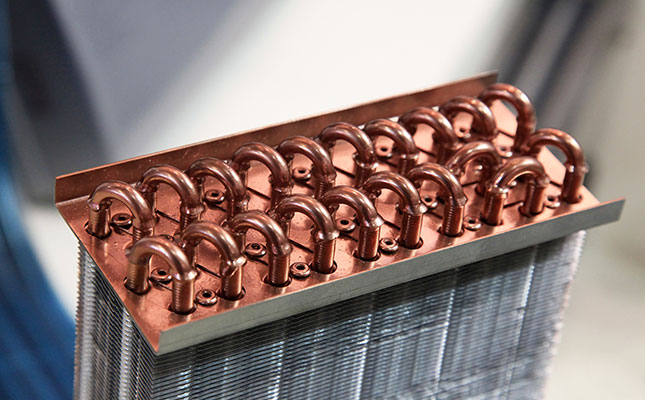
Copper has a long history in components used in air-conditioning systems due to its unique properties.
Properties
- High-thermal conductivity. Copper conducts heat up to eight times better than other metals
- Formability
- Corrosion resistance
- Ease of joining
- Infinite recyclability
- Antimicrobial effect. Pure copper and copper alloys have antimicrobial properties that kill microorganisms on contact and prevent the growth of bacteria and fungi.
- Standard AC units use aluminum components that are vulnerable to these bacteria and fungi. Hence copper components are preferred over aluminium.
Anti Microbial Effect
Contaminated air may cause infections, allergic responses or other toxic effects. Growth of bacteria in heating ventilation and air-conditioning (HVAC) systems and the resulting contamination of indoor air is a serious concern. Infection and disease causing bacteria and fungi thrive in dark, moist environments, and the conditions in HVAC systems are ideal for the growth and spread of these bacteria.
The inherent antimicrobial properties of copper and its alloys control the growth and distribution of bacteria and allergens through HVAC systems. Uncoated copper surfaces are capable of killing bacteria, viruses and fungi in very short periods of time.
Copper HVAC components prevent the growth of bacteria and mold, resulting in longer coil life and higher operating efficiencies. In addition, they reduce airborne contaminants, resulting in improved indoor air quality. Standard AC units use aluminum components that are vulnerable to these contagions.
Corrosion Resistance
Copper has gained new popularity in its modern form: light, strong, corrosion-resistant tube. Its long-lasting and maintenance-free characteristics make copper the leading choice for plumbing, heating, cooling and other mechanical systems. Copper never requires painting for protection from corrosion. In addition, a thin film forms inside the tube, providing natural protection from corrosion.
